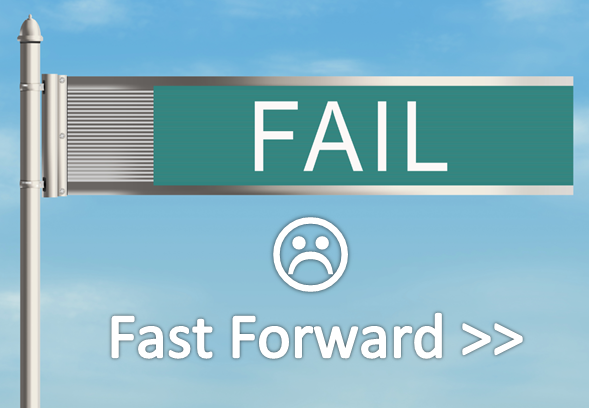
This is the sequel to an article originally published in Human Resources magazine March 2011.
In October 2010 I visited the HR Technology Conference in Chicago, the largest annual conference globally that specifically addresses the use of technology in the HR space. At the final breakfast session, where over 55% of the 900 attendees were Vice Presidents or Directors of HR, an SMS poll was used to assess the uptake and satisfaction with Talent Management systems. 35% of the attendees were in the process of designing or shopping for a talent management system, and 50% were already using one.
Of those using Talent Management systems, 20% admitted to disappointment with their system. The consensus of the expert moderators was that this percentage was likely to be a significant understatement.
At the October 2014 HR Technology conference over 31% of organizations were looking to change their talent management system. Over 90% of organisations admitted to being dissatisfied with their performance management system.
Fast forward to October 2015 – Now, according to Bersin research, 92% of organisations are dissatisfied with their performance management system. According to the 18th annual Sierra-Cedar 2015-2016 HR Systems Survey the adoption rate for Talent Management systems is up to 55% with over 80% adoption envisaged within 3 years. Over 40% of organisations are looking to update their talent management strategy, 14% are looking to change their primary Talent Management suite. Another 20% of organizations are evaluating their options for change.
The commentary notes there is still a “desperate need to gain better data and insight into an organization’s internal workforce” and continues;
In the next few years, it is expected that Talent Management applications will focus “on individual talents, identifying skills and capabilities that are uniquely required for specific situations and opportunities within organizations”
The survey report noted that organizations are implementing enterprise-wide skill assessments to enable development efforts to address the greatest capability gaps. They are trying to implement “agile” performance management processes that involve more frequent goal alignment discussions to improve employee output and engagement.
Little has changed
The consensus of the 2010 panel, echoed by others at the conference, was that the focus of Talent Management was too much on tools and technology, and not enough on business needs and strategies. Consistent with this, the Bersin research presented at that conference showed that 50% of respondents had no clarity about their needs, instead letting the software features (or lack thereof) drive their strategy.

Since then features such as crowd sourced feedback for performance management have been vigorously advocated by vendors, and adopted enthusiastically by some organizations – with no evidence whatsoever that such feedback has any validity. In fact it has been described as a psychometric train-wreck.1 The reason – it is very open to manipulation by those with political savvy. Consistent with this while free text is hard to analyze, the vast majority of crowd sourced comments are positive.
Most of the major talent management systems continue to have a startlingly similar approach and feature set. Despite the proliferation of ‘analytics’, information is simplistic with emphasis on screens that are colorful and appealing, rather than on meeting business information needs.
Major fail points can still be summarized under the following headings;
1. Over standardization and inflexibility
Talent Management systems have been developed from an Information Systems perspective, digitizing existing paper forms. Paper forms, by their very nature, are standardised. This basic architecture enables the development of attractive colourful screens and charts. It is also a fatal trap.
In order to deliver the ‘eye candy’, such systems must remain highly standardised in the data and processes they support. There can be little flexibility; customers must use the system as it is. Content can be varied only within the embedded and limited data structure.
2. Subjective evaluation
The accepted doctrine is that Talent Management systems use a Management by Objectives methodology to assess performance, accompanied by Competency Assessment. The rationale for this is that organisations should measure the what (objectives) and the how (a set of broadly defined core competencies or behaviours).
Management by Objectives is certainly appropriate for senior management, who are (hopefully) held to account, and compensated, for specific business outcomes. While the evidence does show that setting challenging objectives can be effective in improving performance and motivation, there are many other factors that contribute more directly.

For most staff the ongoing day to day and month to month accountabilities of their job role simply cannot be encapsulated in a few objectives. Since staff typically have no training in goal setting, this approach can result in a set of goals that are not measurable, often trivial task statements. Often unrelated to the priorities of the organisation or job role, but still compliant with performance appraisal process requirements.
Competency Assessment is often bundled with, and even confused with, Performance Appraisal. Performance is about objectively observable outcomes, not behaviours. Assessment of high level behaviours, such as communication and teamwork, is always subjective; highly vulnerable to interpretation and bias. Ideally it should be a separate, developmental exercise, with no impact on the performance rating.
3. Poor quality information
The comment is often made that the results of performance appraisals do not reflect the business performance of the organisation. Departmental performance can be poor yet individual performance ratings well above the average.
This mismatch is more likely when competencies are part of the performance appraisal. The assumption is that the defined competency set will result in successful performance. In fact the research does not substantiate any significant link between the competencies typically used in performance appraisal and improved business outcomes.
Another common complaint is that succession planning processes do not facilitate the retention of high performers, nor consistently place the right people in key positions.
In most talent management systems succession planning is only a very simplistic identification of talent, using the popular 9 box grid approach.
Usually the two dimensions on this grid are performance and potential. Potential is sometimes equated with competency. Obviously there is a lot more to potential than a subjective assessment of a few high level behaviours.

The assumption that past or present performance is an indicator of advancement potential is also flawed. There are many many examples where someone with exceptional performance in an operational role does not succeed in a more senior leadership position.
Worst of all, in most Talent Management systems, there is a conspicuous lack of the rich information on individual capability and development experiences that is essential for effective succession planning.
What do organizations want in a Talent Management system?
The experts and panelists at the 2010 HR Technology conference agreed that effectiveness means;
- when an executive asks for all the data on a person – they can “get it now” .
- the system measures people for business results
- the system has the right analytics – provides actionable information
- it drives retention of key performers
- fuels the talent pipeline
- facilitates a succession plan that works
- it can cope with diversity, change, mergers and acquisitions
- it continuously improves, is flexible and scalable to meet changing future needs
This wish list still holds good.
The DNA of effective Talent Management systems
- Flexibility – the system must be process not form driven. There must be multiple options for the HR processes it supports.
- Individuality – the system must enable every individual to be tracked, managed and developed differently.
- Job analysis tools – the fundamental building block of all HR processes.
- Supports the definition and evolution of career pathways and the development of individuals along those pathways.
- Data structure that can capture the rich information relevant to the organization

Flexibility
Every organization has their own way of doing things. Rather than dictating the HR process the system must support the organization in what it wants to achieve, and should embed research based best practices. An effective Talent Management system is flexible enough to accommodate different ways of doing things in different parts of the organisation, at different times.

One example is “Next Generation” Performance Management. That means the system must support the fundamental practices known to drive top performance. It should include tools for defining, agreeing and keeping visible outcome based job performance expectations and measurable goals, at any time. It should provide the information resources needed to support performance.
As organisations are belatedly recognizing, continuous, not annual or biannual, performance feedback and coaching are key to effective performance management. A performance management system must have the tools to make it happen, to monitor its quality and to enable expectation related feedback and achievement records to be used in end of period formal evaluations. It must have the tools to assist managers in diagnosing and addressing the causes of poor performance.
Another example is 360 degree feedback. This is an HR practice that is highly prone to misuse – with potentially disastrous consequences. The Talent Management system needs to build into the 360 feedback process the checks and balances needed to ensure a constructive outcome.
Individuality
Even in the largest organizations each individual’s role has elements that are different. Each individual brings their unique strengths and experiences to their role. In addition to individual job role expectations and performance support a Talent Management system must support tracking of capability gaps, career interests and aspirations and a unique individual development trajectory.
Job analysis tools
Job analysis is the fundamental building block of HR practice, along with work design.
The system must support a configurable scorecard of organizational Critical Success Factors. These are translated meaningfully to each department, team and individual via job responsibilities, and time bounded goals where applicable.
There must be a job role description management function, including tools to analyze the role specific capability requirements.
In parallel there should be a comprehensive competency management system that goes beyond the vaguely defined core competencies. It should enable the in depth identification, definition, assessment and development of organization specific functional, technical, clinical and leadership competencies. These are the competencies that reliably predict job success.

Career Pathways & Development

One of the biggest predictors of retention and engagement is the opportunity to advance and develop one’s career and expertise. The Talent Management system should make career pathways and options visible to staff, along with a clear outline of responsibilities involved in each role and the capabilities they need to develop. It should provide a means for individuals to register their interests and aspirations. It should have a platform for career discussions and personal development towards career goals.
The Talent Management system must include competency linked learning. The LMS component should target learning to identified capability and competency gaps for current roles and career pathways. The system should support both formal and informal learning and enable tracking of progress and learning effectiveness.
Rich Information
The system must capture rich information on individual skills, achievements, experience, training, development work, aspirations, career interest, projects and performance.
Managers and HR need a system that delivers consolidated reporting on demand. It should provide in depth, summary, comparative and trend information on performance and capability for individuals, teams, departments, locations and the organisation as a whole. Above all, reporting must identify the areas of risk; actionable capability gaps, flight risk amongst high performers, critical roles without potential successors.

The Performance Management system should capture information on issues in the work environment that affect performance. It should enable HR and senior management to track the performance management process itself, identifying managers who need to develop these fundamental leadership skills.
Training is a costly exercise that often does not transfer to the workplace. The Talent Management system should provide information on what resources and initiatives have a positive effect on workplace skills and outcomes, and which ones do not.
For succession planning that works, there must be information on those personal and growth factors known to predict advancement potential, as well as the definition and assessment of success factors specific to an organisation.
For those selected into the talent pipeline, the Talent Management system must enable the design, programming and tracking of the developmental experiences needed for all career and leadership tracks. It should support identification and closing of capability gaps for specific positions. There should be the option to keep talent pool status confidential in order to enable management of expectations and avoid disappointments.
Managing people is a complex and difficult endeavour. Look for a system that capitalizes on the power of technology to make that complexity manageable. As Einstein famously said “Everything should be made as simple as possible, but not simpler.”
The Centranum system has been purpose built from the ground up to support practices that independent research shows drive capability and performance. It delivers the rich information that organizations need for decision making. It enables organizations to manage, develop and sustain the capabilities and performance of their people as part of day to day operations, not a separate administrative exercise.


